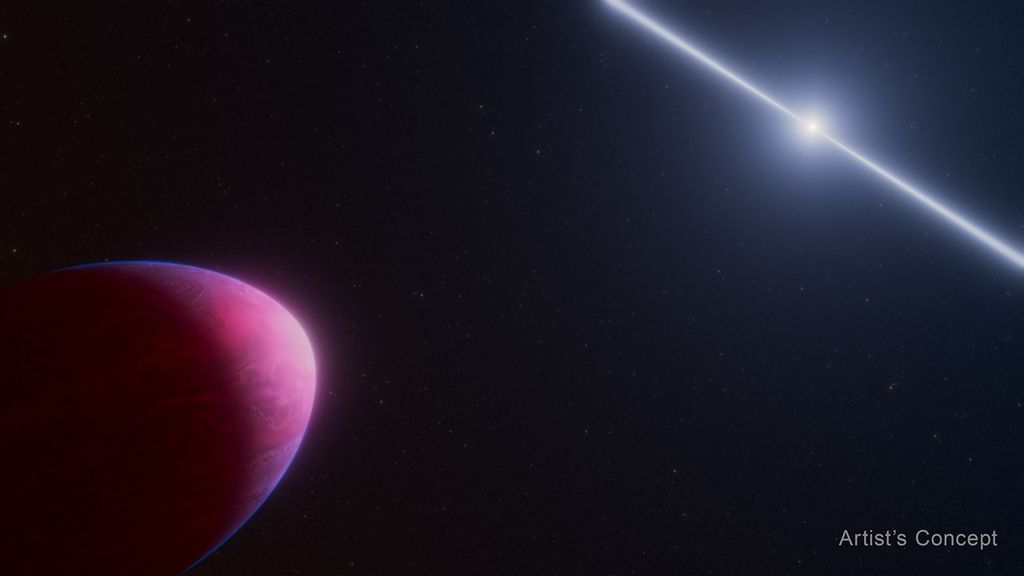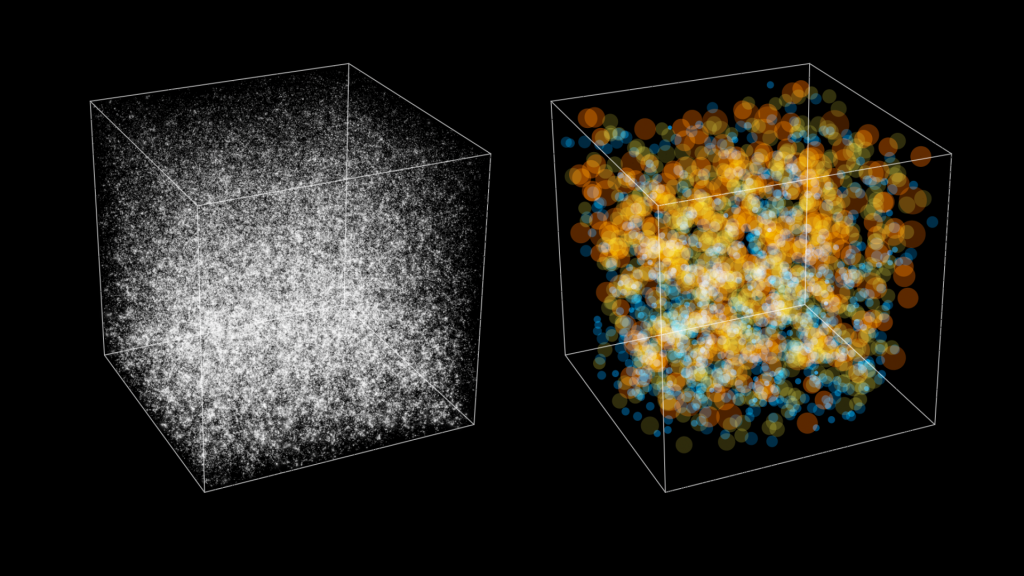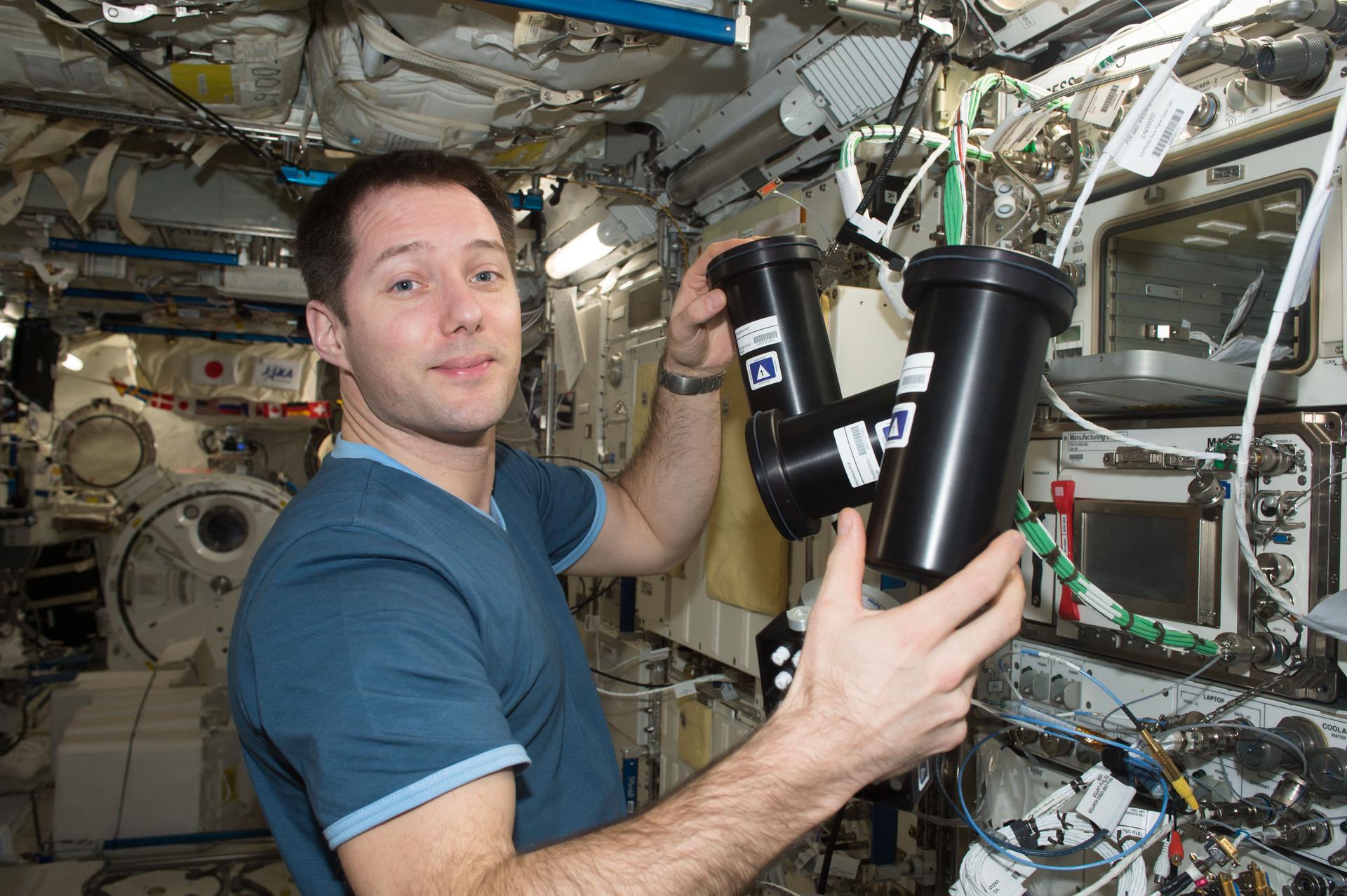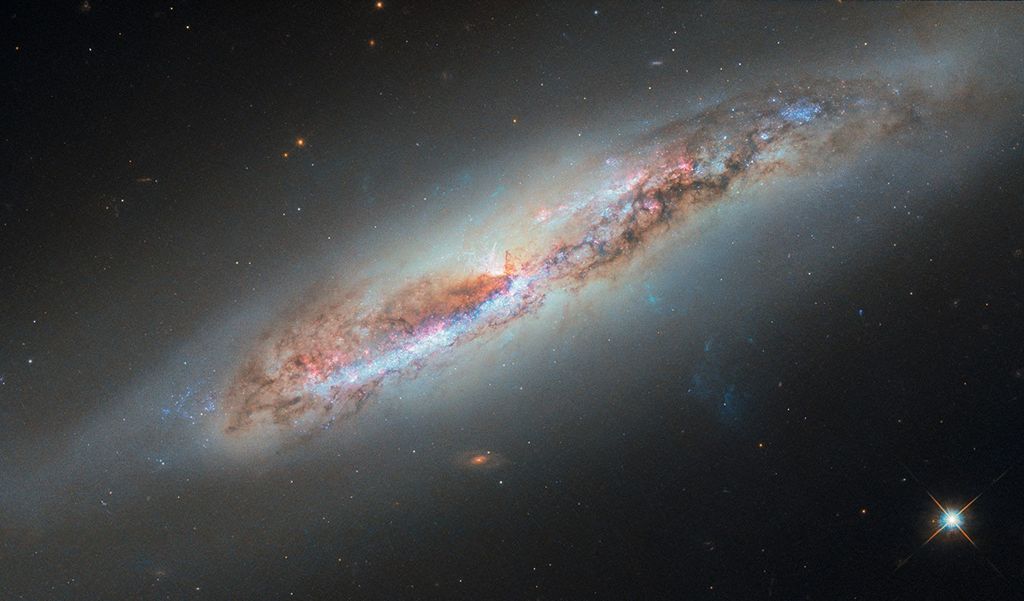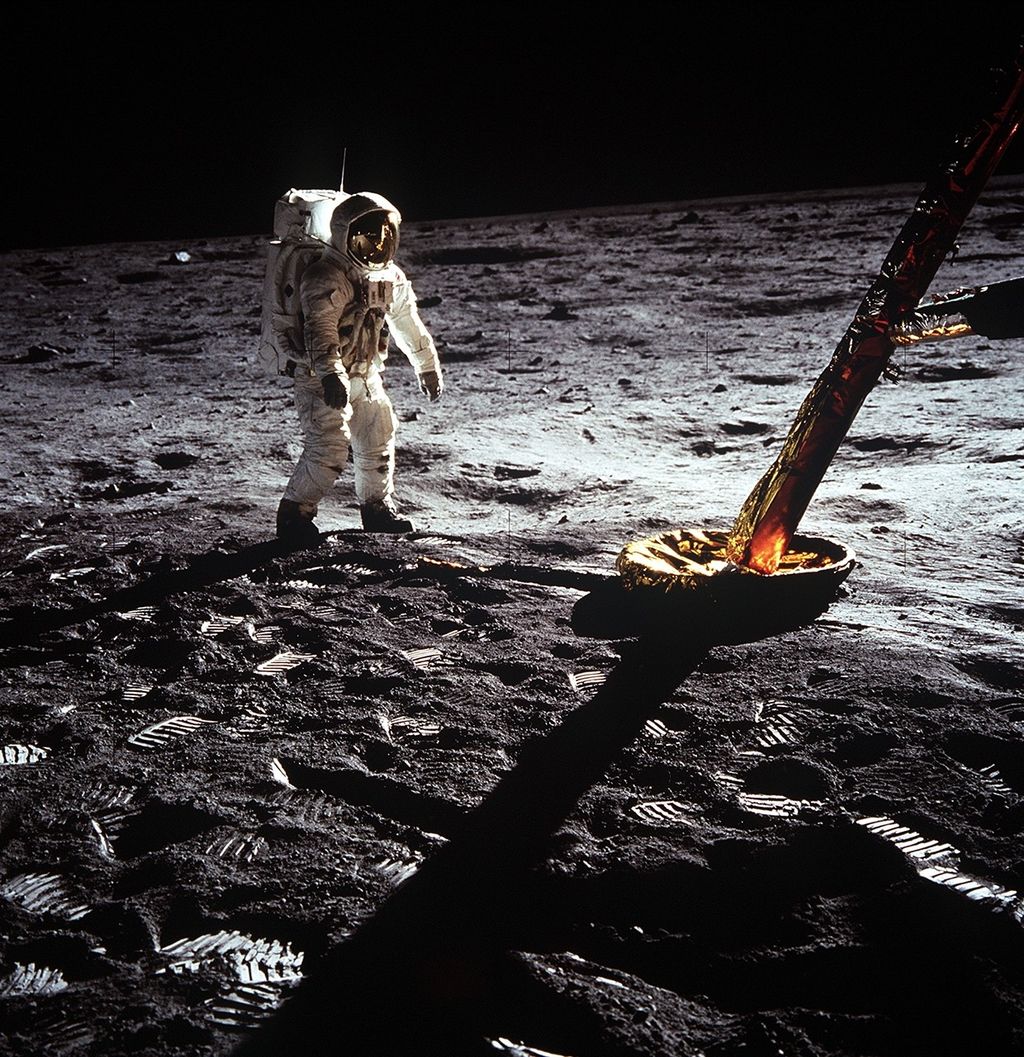1 min read
Gas Pillars in the Eagle Nebula (M16): Pillars of Creation in a Star-Forming Region

Undersea corral? Enchanted castles? Space serpents? These eerie, dark pillar-like structures are actually columns of cool interstellar hydrogen gas and dust that are also incubators for new stars. The pillars protrude from the interior wall of a dark molecular cloud like stalagmites from the floor of a cavern. They are part of the "Eagle Nebula" (also called M16 - the 16th object in Charles Messier's 18th century catalog of "fuzzy" objects that aren't comets), a nearby star-forming region 6,500 light-years away in the constellation Serpens.
The pillars are in some ways akin to buttes in the desert, where basalt and other dense rock have protected a region from erosion, while the surrounding landscape has been worn away over millennia. In this celestial case, it is especially dense clouds of molecular hydrogen gas (two atoms of hydrogen in each molecule) and dust that have survived longer than their surroundings in the face of a flood of ultraviolet light from hot, massive newborn stars (off the top edge of the picture). This process is called "photoevaporation. "This ultraviolet light is also responsible for illuminating the convoluted surfaces of the columns and the ghostly streamers of gas boiling away from their surfaces, producing the dramatic visual effects that highlight the three-dimensional nature of the clouds. The tallest pillar (left) is about about 4 light-years long from base to tip.
As the pillars themselves are slowly eroded away by the ultraviolet light, small globules of even denser gas buried within the pillars are uncovered. These globules have been dubbed "EGGs." EGGs is an acronym for "Evaporating Gaseous Globules," but it is also a word that describes what these objects are. Forming inside at least some of the EGGs are embryonic stars - stars that abruptly stop growing when the EGGs are uncovered and they are separated from the larger reservoir of gas from which they were drawing mass. Eventually, the stars themselves emerge from the EGGs as the EGGs themselves succumb to photoevaporation.
The picture was taken on April 1, 1995 with the Hubble Space Telescope Wide Field and Planetary Camera 2. The color image is constructed from three separate images taken in the light of emission from different types of atoms. Red shows emission from singly-ionized sulfur atoms. Green shows emission from hydrogen. Blue shows light emitted by doubly- ionized oxygen atoms.
About the Object
- R.A. PositionR.A. PositionRight ascension – analogous to longitude – is one component of an object's position.18h 18m 47.99s
- Dec. PositionDec. PositionDeclination – analogous to latitude – is one component of an object's position.-13° 46' 59.99"
- ConstellationConstellationOne of 88 recognized regions of the celestial sphere in which the object appears.Serpens
- DistanceDistanceThe physical distance from Earth to the astronomical object. Distances within our solar system are usually measured in Astronomical Units (AU). Distances between stars are usually measured in light-years. Interstellar distances can also be measured in parsecs.6,500 light-years (2,000 parsecs)
About the Data
- InstrumentInstrumentThe science instrument used to produce the data.HST>WFPC2
- Exposure DatesExposure DatesThe date(s) that the telescope made its observations and the total exposure time.April 1, 1995
- Object NameObject NameA name or catalog number that astronomers use to identify an astronomical object.M16, Eagle Nebula, NGC 6611
- Object DescriptionObject DescriptionThe type of astronomical object.Emission Nebula
- Release DateNovember 2, 1995
- Science ReleaseEmbryonic Stars Emerge from Interstellar “Eggs”
- Credit
Related Images & Videos

Star-Birth Clouds in M16: Stellar "Eggs" Emerge from Molecular Cloud
This eerie, dark structure, resembling an imaginary sea serpent's head, is a column of cool molecular hydrogen gas (two atoms of hydrogen in each molecule) and dust that is an incubator for new stars. The stars are embedded inside finger-like protrusions extending from the top...

Stellar "Eggs" Emerge from Molecular Cloud: Closeup of Evaporating Globules in M16
This eerie, dark structure, resembling an imaginary sea serpent's head, is a column of cool molecular hydrogen gas (two atoms of hydrogen in each molecule) and dust that is an incubator for new stars. The stars are embedded inside finger-like protrusions extending from the top...
Share
Details
Claire Andreoli
NASA’s Goddard Space Flight Center
Greenbelt, Maryland
claire.andreoli@nasa.gov


